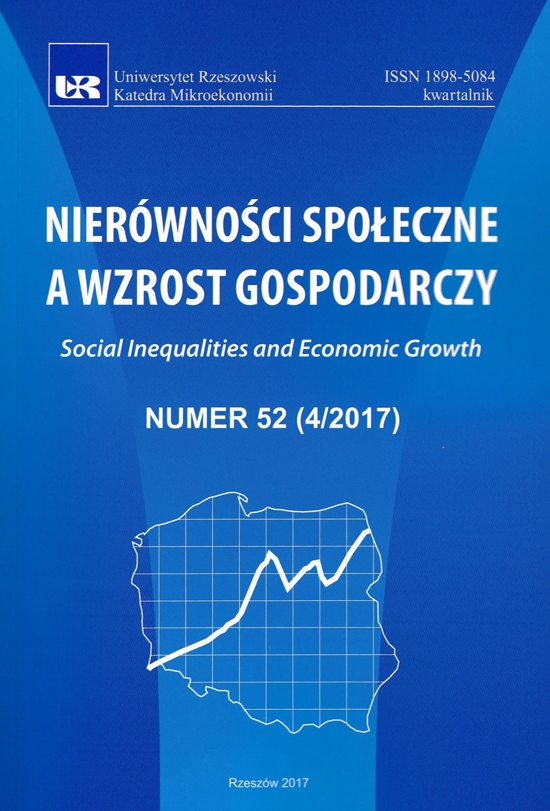Giełdowy rynek instrumentów pochodnych w Polsce – szanse i zagrożenia dla zintegrowanego rozwoju
DOI:
https://doi.org/10.15584/nsawg.2017.4.38Słowa kluczowe:
instrumenty pochodne, zarządzanie ryzykiem, transformacjaAbstrakt
W pracy przedstawiona została analiza wybranych aspektów zarządzania ryzykiem w przedsiębiorstwie w świetle zachodzących procesów transformacji społeczno-gospodarczej na przełomie XX i XXI wieku w Polsce. W takich warunkach niezbędna jest budowa efektywnego systemu zarządzania ryzykiem w przedsiębiorstwie, ukierunkowanego na tworzenie wartości. Niezbędne dla rozwoju systemów zarządzania ryzykiem w polskich przedsiębiorstwach jest zwiększenie dostępności narzędzi ograniczania ryzyka oraz podwyższenie poziomu wiedzy na temat tych instrumentów. W świetle zachodzących przemian społeczno-gospodarczych, wdrażanie systemów zarządzania ryzykiem jest warunkiem koniecznym utrzymania, a także poprawy pozycji konkurencyjnej polskich przedsiębiorstw. Rozwój rynku instrumentów pochodnych jest niezbędny z punktu widzenia utrzymania konkurencyjności polskiego rynku w kontekście integracji z Unią Europejską. Dostępność szerokiego wachlarza instrumentów pochodnych dla podmiotów gospodarczych stanowi niezbędny warunek upowszechniania systemów zarządzania ryzykiem, a w konsekwencji poprawy ich pozycji rynkowej. W świetle zachodzących przemian społeczno-gospodarczych, wdrażanie systemów zarządzania ryzykiem jest warunkiem koniecznym utrzymania lub poprawy pozycji konkurencyjnej polskich przedsiębiorstw.Downloads
Download data is not yet available.
Pobrania
Opublikowane
2020-11-13
Jak cytować
Śpiewak, T. (2020). Giełdowy rynek instrumentów pochodnych w Polsce – szanse i zagrożenia dla zintegrowanego rozwoju. Nierówności Społeczne a Wzrost Gospodarczy, 4(52), 510–526. https://doi.org/10.15584/nsawg.2017.4.38
Numer
Dział
Artykuły
Licencja
Prawa autorskie (c) 2017 Uniwersytet Rzeszowski

Utwór dostępny jest na licencji Creative Commons Uznanie autorstwa – Na tych samych warunkach 4.0 Miedzynarodowe.


